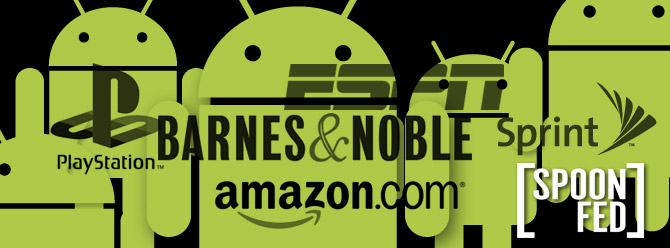Curated Android Not Evil, Only Way to Beat Apple at Its Own Game
When Barnes & Noble launched its Nook Color device earlier this week, I jokingly asked on Twitter whether the company had just launched a Samsung Galaxy Tab with an eReader app. And many others wondered why someone would buy what’s ostensibly a $249 Android tablet that doesn’t access the full Android Market. Instead, this reading-focused gadget will come with a few apps out of the box, including Pandora, and Barnes & Noble will make a limited set of apps available through its own curated store.
This strategy plays right into Steve Jobs’ very entertaining public railing against Android during the company’s recent earnings call. He argued that the multiple proprietary interfaces and app stores proliferating on top of Google’s OS was creating “a mess for both users and developers.” I disagree. It’s an opportunity, and the companies that figure out how to deliver the best curated experience—without eliminating user choice—will have the best shot at taking Apple down.
Another example of a curated Android experience is Sprint ID. The wireless carrier recently rolled out packs of apps, ringtones, wallpapers, and widgets revolving around various themes and popular brands for three new affordable Android phones. Choices right now range from EA Games and Yahoo to the more generic Golf Enthusiast and Health and Fitness. More big names such as ESPN, MTV, and Oprah Winfrey are on the way.
While these packs were slow to download on the low-end handsets we tested and typically force you to download more stuff to get the full experience, the concept is sound. Sprint ID will also be coming to the operator’s version of the Galaxy Tab, and I expect these skins on steroids to work much better on higher-powered hardware. They’ll also help Sprint differentiate its devices versus other carriers while providing consumers a shortcut to personalization. At the same time, Sprint allows users to access the full Android Market and opt for no overlay at all, which is the way it should be.
So what about Amazon? If you believe the rumors, the online retail giant and maker of the hot-selling Kindle is gearing up to release its own Android tablet and app store. To Steve Jobs, this is just further evidence of Android’s fragmentation, but from Amazon’s perspective it makes perfect sense. Given the millions of Amazon accounts out there, why not provide a curated experience that allows consumers to leverage the company’s one-click ordering process across not only apps but movies, music, and TV shows? (And, of course, you could buy a tablet for your loved one using the bundled Amazon Store app.) At least in the Android universe, no one else has this unique opportunity to leverage so much content under one umbrella.
Microsoft’s Xbox Live section of its Windows Phone 7 Marketplace is yet another example of curating done right. Sure, you can download other games, but the Xbox Live brand immediately signals to consumers that those titles have a higher level of quality. Engadget reported this week that Sony is doing the same thing for games for its upcoming Android-powered PlayStation phone.
Are there too many app stores out there? Definitely, but once competition begins to thin the herd, the players left standing will be the ones providing the best curated experiences across multiple types of content—not experiences so daunting that users throw up their hands and decide not to shop at all. Right now the wide-open Android Market is a mess, not the attempts to make it more user-friendly, which will only improve as Apple’s competitors learn what works.
Sign up to receive The Snapshot, a free special dispatch from Laptop Mag, in your inbox.
Editor-in-chief Mark Spoonauer directs LAPTOP's online and print editorial content and has been covering mobile and wireless technology for over a decade. Each week Mark's SpoonFed column provides his insights and analysis of the biggest mobile trends and news. You can also follow him on Twitter.


